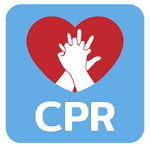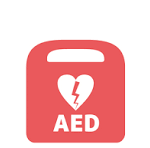What does someone look like with SCA
When someone is in SCA, they are unresponsive and aren’t breathing normally. They may look like they are gasping or shaking, but if they are not responsive and their breathing doesn’t look normal – then they are in SCA. those that seem healthy, and even kids.
What to do if someone is in SCA
The body’s organs and brain need oxygenated blood to survive, thus survival from SCA depends on everyday people providing help right away.
What is Sudden Cardiac Arrest
SCA is a life-threatening emergency that occurs when a person’s heart suddenly stops pumping oxygenated blood effectively to the body. This can happen to people of all ages, even those that seem healthy, and even kids.
Who does SCA Affect
In one year alone, 475,000 Americans die from a cardiac arrest.
Globally, cardiac arrest claims more lives than colorectal cancer, breast cancer, prostate cancer, influenza, pneumonia, auto accidents, HIV, firearms, and house fires combined.
More than 350,000 cardiac arrests occur outside of the hospital each year.
In 2015, any-mention sudden cardiac arrest mortality in the US was 366,807. CPR, especially if administered immediately after cardiac arrest, can double or triple a person’s chance of survival. About 90 percent of people who experience an out-of-hospital cardiac arrest die.
Source
https://cpr.heart.org/en/resources/cpr-facts-and-stats
3 main steps to treat someone in Sudden Cardiac Arrest:

Call 911
Have someone call 911 right away Tell the 911 dispatcher the exact location of the person who is unresponsive and not breathing normally.

Begin CPR
Make sure the person is lying on a hard flat surface (if they are on a bed, put them on the floor) Kneel right beside the person, and then place one hand in the center of the chest between the nipples, and then place the other hand on top of the first, now push down firmly 1/3rd to ½ of their chest depth (usually 2 inches for an adult) Compress (push down) at a rate of 100 beats per minute Make sure your elbows are locked and arms are straight Do not worry if you hear any sounds when you push down

Use an AED
Press the power button to turn the AED on Follow the voice prompts as it guides you through putting the two sticky AED pads on the person chest (as shown in the picture on each pads) Once the pads are the person’s chest, the AED will analyze the person's heart rhythm. Only if the AED detects that a shock is needed, will it give one. The AED will tell you to make sure you aren’t touching the patient, and then press the shock button. After the shock is given the AED will keep talking you through CPR until EMS arrives and takes over. The AED will re-analyze the heart every 2 minutes and if another shock is needed it will repeat the same steps.
